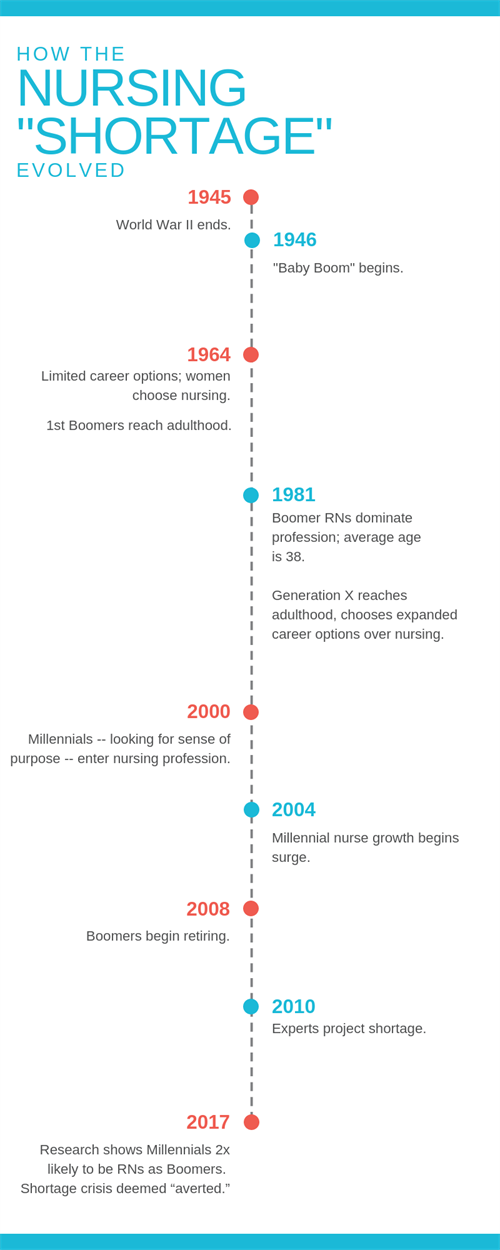How the Nurse "Shortage" Evolved
Oct 17, 2018, 11:57 AM
<1-min. read time> You've likely heard about the variations in nursing-workforce projections across the country.
A mix of shortages and surpluses in RN and PN personnel are anticipated.

The newest information comes from a study released in the October 2017 issue of Health Affairs that notes Millennials are entering the nurse workforce at nearly double the rate of Baby Boomers.
The result? Large national shortages of RNs have been averted.
It appears that Millennials are coming to save the day!
Here's a timeline of what's happened over the years:
1945:
World War II ends.1946:
"Baby Boom" begins.1964:
With limited career options, women choose nursing. First group of Baby Boomers reaches adulthood.1981:
Boomer RNs dominate the profession. The average age of a nurse is 38. Generation X reaches adulthood. With more career options, fewer choose nursing.2000:
Millennials -- looking for a sense of purpose in their lives, according to studies -- begin to enter the nursing profession.2004:
Millennial nurse growth begins to surge.2008:
Baby Boomer nurses begin to retire.2010:
Experts project shortage.2017:
Research shows Millennials are twice as likely to be RNs as Boomers were when choosing a career. Shortage crisis is deemed to be "averted."How, then, will the industry prepare for this surge in nursing students? How is your program making changes?
Check out some of the solutions available from ATI that can help.
